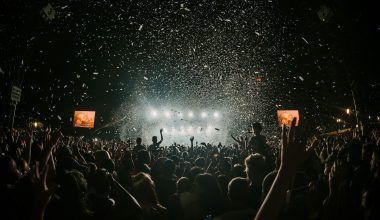Shooting a music video is an exciting and creative process. Whether you’re an artist, filmmaker, or content creator, the process of creating a music video shot brings your music to life. It’s about capturing the right visuals that match the rhythm, story, and emotions of the song. But where do you start? How can you plan and execute a shoot that looks professional while keeping things manageable?
In this guide, we will take you step by step through everything you need to know. From planning your shots to choosing locations and equipment, we’ll help you bring your music video to life. You don’t need a huge budget or team to create something visually stunning—just the right techniques and tools.
Understanding the Importance of a Music Video Shot
A music video shot is more than just recording someone singing or performing. It’s about telling a story that visually represents the song. A great shot can captivate viewers, make them feel connected to the music, and even help the video go viral.
For example, if your song is emotional, you may want to use close-up shots to capture the artist’s facial expressions. On the other hand, if the song is upbeat, fast-paced shots and dynamic movements will keep energy levels high. Each music video shot has a purpose, so planning is essential.
Step 1: Develop a Concept for Your Music Video
Before you start thinking about the music video shots you’ll need, you must decide on a concept. Ask yourself these questions:
- What is the story behind the song?
- What mood or vibe do I want to convey?
- Who is my audience?
For example, if your song talks about heartbreak, you may want a moody, dark setting. If it’s about partying or celebration, bright colors and energetic shots will work best.
Once you have your concept, write it down. Create a rough idea of how the video will flow from start to finish. This is your foundation, and it will guide all the decisions you make later.
Step 2: Break the Song into Scenes
Now that you have a concept, it’s time to plan individual music video shots that align with the song. Break the song into smaller parts, like verses, chorus, and bridge.
For example:
- Verse 1: The artist walking through a park (establishing shot).
- Chorus: Close-up of the artist singing passionately.
- Bridge: Emotional or dramatic moment (slow-motion shot).
By dividing the song into parts, you can plan exactly what will happen in each segment. This makes shooting easier and ensures you stay organized.
Step 3: Choose the Right Locations for Your Shots
The location is a big part of what makes a music video shot visually appealing. You don’t always need fancy or expensive locations to make a video stand out. Sometimes, even a simple background can work if you use it creatively.
Here are some tips to choose the perfect location:
- Match the location with the song: For a romantic ballad, consider shooting in a scenic park or on the beach. For an energetic rap video, urban settings like city streets work well.
- Check for natural light: Outdoor locations often give the best lighting for free.
- Think about logistics: Make sure the location is accessible and won’t have too many distractions like noise or heavy traffic.
Once you decide on a location, visit it beforehand. This will help you visualize the shots and plan the angles you need.
Step 4: Plan Your Shots with a Storyboard
A storyboard is like a visual roadmap for your music video. It helps you see how each music video shot will look and flow together. You don’t have to be an artist to create a storyboard—stick figures and basic sketches work fine!
Here’s what to include:
- Shot type: Close-up, wide-angle, or mid-shot.
- Camera movement: Will the camera move side to side, zoom in, or stay still?
- Scene description: Write a sentence about what’s happening in the shot.
For example, if you want a dramatic slow-motion scene during the chorus, sketch it out and write: “Slow-motion close-up of the singer’s face as they belt out the lyrics.”
Step 5: Choose the Right Equipment
You don’t need expensive cameras to capture professional music video shots. Today, even smartphones can shoot high-quality videos if you use them properly. Here are some must-have tools for shooting a music video:
- Camera: A DSLR, mirrorless camera, or even a smartphone with good video quality.
- Tripod or stabilizer: Helps avoid shaky footage and keeps shots steady.
- Lighting: Natural light works great, but you can also use affordable LED lights for indoor scenes.
- Editing software: Tools like Adobe Premiere Pro, Final Cut Pro, or free software like DaVinci Resolve.
Remember, the quality of your music video shot comes down to creativity, not the price of your equipment.
Step 6: Practice Camera Angles and Movements
Different camera angles and movements can make a music video shot more dynamic. For instance:
- Wide shots: Show the entire scene and give context.
- Close-ups: Highlight emotions, expressions, or important details.
- Tracking shots: Follow the artist as they move through the location.
- Overhead shots: Give a unique perspective from above.
Before the shoot, experiment with a few angles and movements to see what looks best.
Step 7: Capture Extra Footage (B-Roll)
One of the most important things you can do during your shoot is capture extra footage, known as B-roll. This could include shots of nature, people dancing, or even random visuals that match the song’s theme.
B-roll footage can save your video during editing. If a main music video shot doesn’t look right, you can use B-roll to fill in gaps or add visual interest.
Step 8: Edit and Bring It All Together
Once you finish shooting, the real magic happens during editing. Use editing software to organize, cut, and piece together the shots. Sync the video perfectly with the song, and add effects like slow-motion, transitions, or color grading.
Start by organizing all your footage. Choose the best takes, and arrange them based on your storyboard. Then, add finishing touches like:
- Transitions: Smooth cuts between scenes.
- Color correction: Adjust colors to set the mood.
- Visual effects: If your video concept calls for them.
Final Thoughts
Creating the perfect music video shot takes planning, creativity, and practice. With the right approach, anyone can make a music video that captures attention and tells a story. Remember to take it one step at a time—from concept to shooting to editing. Don’t stress about perfection. Instead, focus on telling your story in a way that connects with your audience.
So, grab your camera, start planning, and make your vision come to life. With patience and passion, you’ll create something you can be proud of!
For further reading, explore these related articles:
For additional resources on music marketing and distribution, visit DMT Records Pvt. Ltd..






